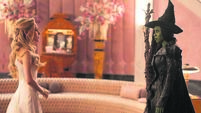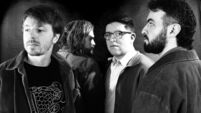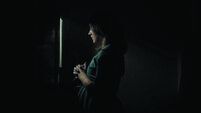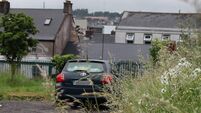Silent film treat for cinema fans in Cork

Gwenda Young, lecturer in the Department of Film and Screen Media at UCC is instrumental in bringing the restored film, The Signal Tower to Cork.
THE gala screening of The Signal Tower (1924), directed by Clarence Brown, at the Aula Maxima is open to the public and admission is free.
It will be accompanied by a live musical performance by Stephen Horne, just as audiences at the Coliseum in 1925 would have experienced the film.
Gwenda Young, lecturer in film at the Department of Film and Screen Media at UCC, is instrumental in bringing the restored film to Cork. She says it went out of circulation and ended up being transferred to 16mm. Years later, film historian Kevin Brownlow got in touch with a silent film collector who was a train aficionado. The film has a train setting and celebrates steam engines. The ‘Signal’ Tower of the title is in a small remote outpost in the mountains.
“Kevin is a huge fan of Brown,” said Gewnda. “He got hold of a very rare 16mm print of the film which no one had seen for decades. Kevin’s company, Photoplay Productions, in association with San Francisco Silent Film Festival, set about restoring it. It can now be shown in its digital version and is also available on the more old-fashioned 35mm. It was recently shown in Knoxville, Tennessee, at the Clarence Brown Film Festival where there was a huge audience.”
Gwenda, who has published a biography of Brown, is friendly with Kevin and Robert Byrne (a master restorer) from the San Francisco Silent Film Festival. “I thought it would be amazing to bring the film over to Ireland. I did a bit of research and discovered it had been screened in Cork in 1925 with a write-up in the Cork Examiner,” she said.
The event has been made possible “by generous funding from ZEUS Scooters and UCC. It’s apt that funding came from ZEUS, which makes E-scooters.
The film, about transportation, was acclaimed on its release.
“You’re really blown away by the beauty of the machinery. Brown (who had roots in Co Down) was originally an engineer.
“The film starts out almost like a love story about trains. It was filmed on location in Mendocino County in California, a gorgeous place. The story develops. It’s about someone who is like a cuckoo coming into a nest, trying to poison a husband and wife against each other. The story is familiar but is beautifully done. When I saw it in Knoxville, the audience was cheering, shouting and roaring. Hopefully, there will be a similar reaction when it’s shown here.”
Is there much of an audience for silent movies?
“I was amazed when I went to the San Francisco Silent Film Festival a few years ago. There were crowds around the block queuing to get tickets.
“Silent movies are intensely visual. It depends on how they are presented. If you screen one with live music, there is nothing better. It lifts it off the screen. I know people think silent films might be boring and slow and old-fashioned, but actually, you get swept up so much when you see something projected that has been beautifully restored.
“And we have this amazing musician who I think is going to be incredible on the night. He plays piano and the accordion.
Gwenda was told by Byrne that restoring a film is a bit like detective work.
“Maybe you don’t have everything in the film. There might be another print somewhere else. You put them together and create a reconstruction. A lot of work went into this restoration with original tinting and toning.”
Silent film is still influential, says Gwenda. “Martin Scorsese, possibly the greatest of the U.S directors still working, has for years been referencing silent films and drawing on them. After all his success, he said the thing he is most proud of is his work in film preservation and restoration.”
The Signal Tower is an early work by Brown, a major U.S film director who was a key figure in the silent era and the golden age of Hollywood. He was known as Greta Garbo’s favourite director.
Although all his sound films are available, his silent work, though critically acclaimed, is less accessible. More than 80% of all films from cinema’s silent era (1895-1928) have been ‘lost’. The Signal Tower came close to suffering the same fate. While there are no original 35mm film prints of it, in 1928, the film was duplicated onto 16mm film stock. It is from this 95-year-old copy that the restoration is based.
There is limited availability of seats for the screening. Visit https://www.ucc.ie/en/fmt/film/ or follow Twitter/X: @uccfilmstudies for updates.







